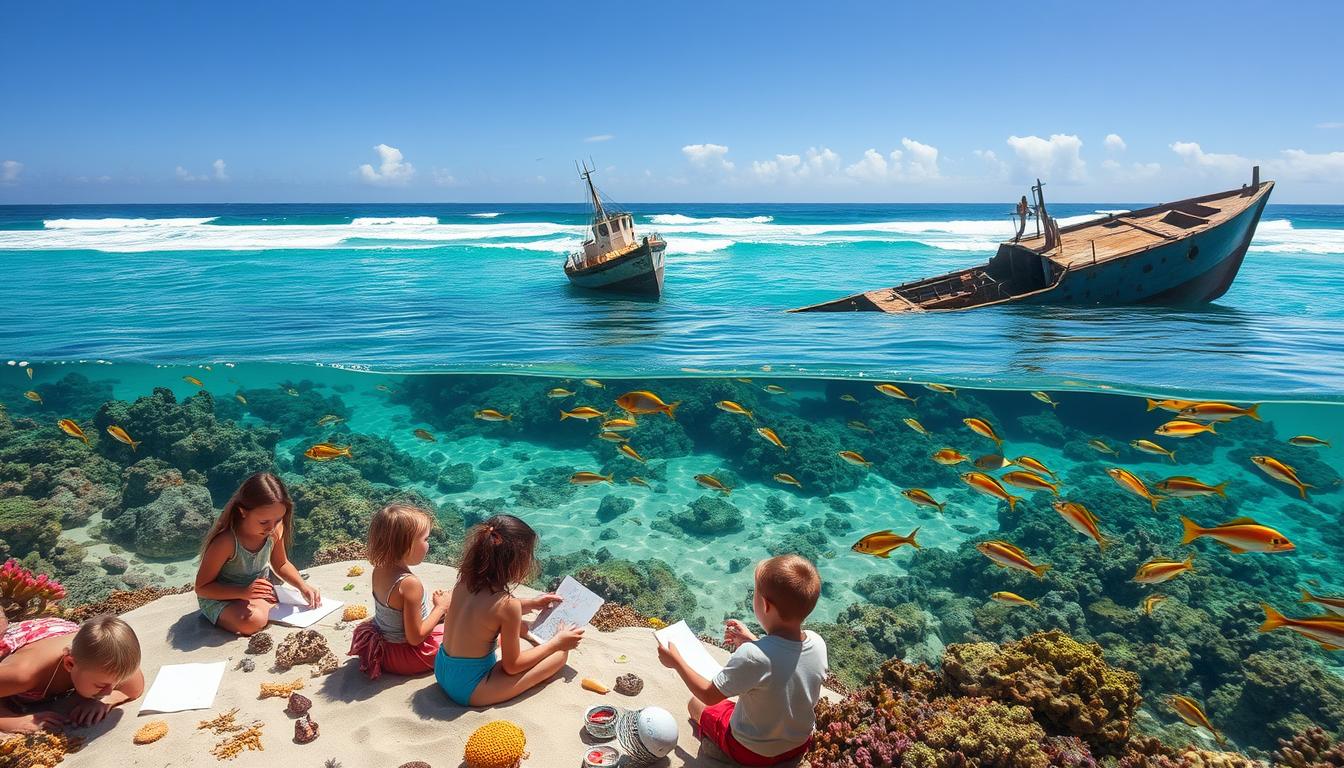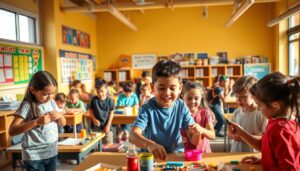Under the Sea Learning Pack
Five-year-old Mia squealed as she dipped her hands into a bin of blue-tinted water, carefully retrieving plastic sea creatures with miniature tongs. “Look, Mom! I found Nemo’s cousin!” she announced, holding up a bright orange fish. This simple activity – part sensory play, part science lesson – sparked hours of imaginative storytelling and questions about marine habitats.
Our ocean-themed educational pack turns everyday moments like Mia’s into opportunities for growth. Designed for curious minds aged 3-8, these materials blend play with purpose through engaging marine exploration. Children develop essential abilities while investigating tidal pools, creating coral reef art, and solving underwater math mysteries.
Key Takeaways
- Comprehensive marine-themed activities support cognitive growth and creativity
- Hands-on experiences boost fine motor skills and sensory processing
- Adaptable projects grow with children from preschool through elementary
- Multi-sensory approach enhances retention and engagement
- Real-world connections foster environmental awareness early
Educators and parents love how these resources meet kids where they are. A toddler might practice color sorting with seashells, while a second-grader diagrams ocean currents. Every activity builds foundational academic skills through playful discovery, proving that learning truly flows when children follow their natural curiosity.
Under the Sea Learning: Creative Activity Ideas
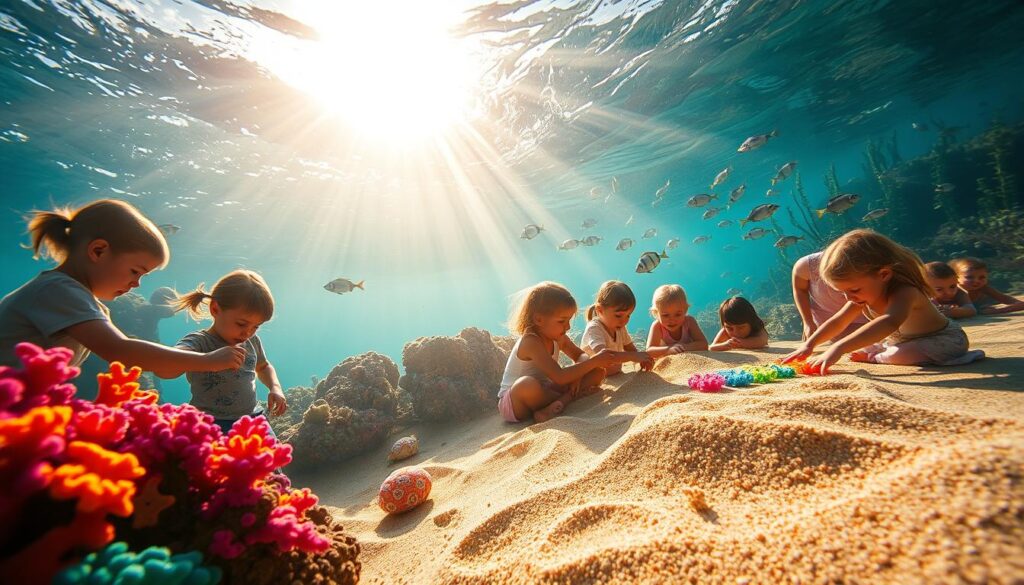
Have you ever watched a child’s eyes light up as they discover hidden treasures in a jar of swirling blue liquid? Our marine-themed activities transform everyday objects into tools for discovery. These projects blend science with storytelling, letting kids explore concepts through hands-on experimentation.
Science in a Bottle: Liquid Layers & Floating Letters
Clear water bottles become magical learning tools when filled with oil, water, and blue food coloring. Children shake them to create temporary waves, then watch materials separate. “Why does the shell sink but the plastic crab float?” becomes a natural question, sparking conversations about density.
Hide plastic letters or numbers in the mixture for surprise literacy practice. Kids fish out characters with tweezers, building fine motor skills while spelling simple words. This activity grows with learners – toddlers match colors, while older children solve math problems using floating numerals.
Miniature Marine Worlds for Big Imaginations
Transform baking trays into underwater landscapes using sand, pebbles, and toy creatures. Children arrange coral reefs from craft materials, developing spatial awareness. These small world setups encourage storytelling about octopus families or dolphin rescues.
Try freezing plastic fish in ice cubes for a chilly motor challenge. Little hands chip away with spoons, learning how temperature changes materials. Count liberated creatures together, turning melting moments into counting practice. Every splashy experiment reinforces concepts through joyful play.
Sensory Play and Craft Projects Inspired by the Ocean
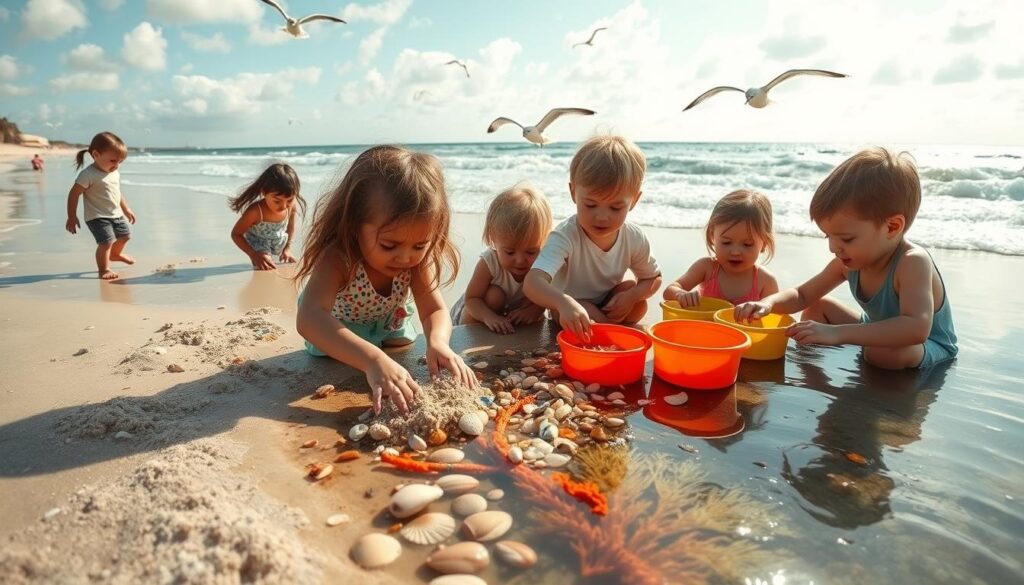
Teachers often report that tactile projects spark deeper engagement than traditional worksheets. Textured art and interactive water stations let children explore concepts through touch, sight, and sound while building essential abilities.
DIY Sensory Bins and Water Experiments
Transform plastic tubs into discovery zones with blue-dyed rice, dried pasta shaped like shells, and rubber sea stars. Little learners strengthen fine motor skills by sorting creatures with tweezers or pouring water between cups. “My fingers feel the bumpy pasta!” exclaimed one preschooler during a texture-hunt game.
Freeze plastic dolphins in ice cubes for a chilly science challenge. Children use droppers of warm water to melt the blocks, cheering as each marine friend emerges. This activity naturally introduces states of matter while developing hand strength.
Bubble Wrap Starfish and Tin Foil Ocean Scenes
Crinkle bubble wrap becomes art magic when kids paint its surface with orange and purple hues. Pressing paper starfish cutouts onto the wrap creates textured masterpieces perfect for bulletin boards. Gross motor movements get a workout as children stamp large sheets spread across tables.
Wrap cardboard with aluminum foil to make shimmering canvases. Young artists paint swirling ocean patterns using metallic blues, then add sequin fish stickers once dry. These projects turn recycled materials into sparkling ocean scene displays that catch sunlight beautifully.
Learning Through Storytime and Ocean Literature
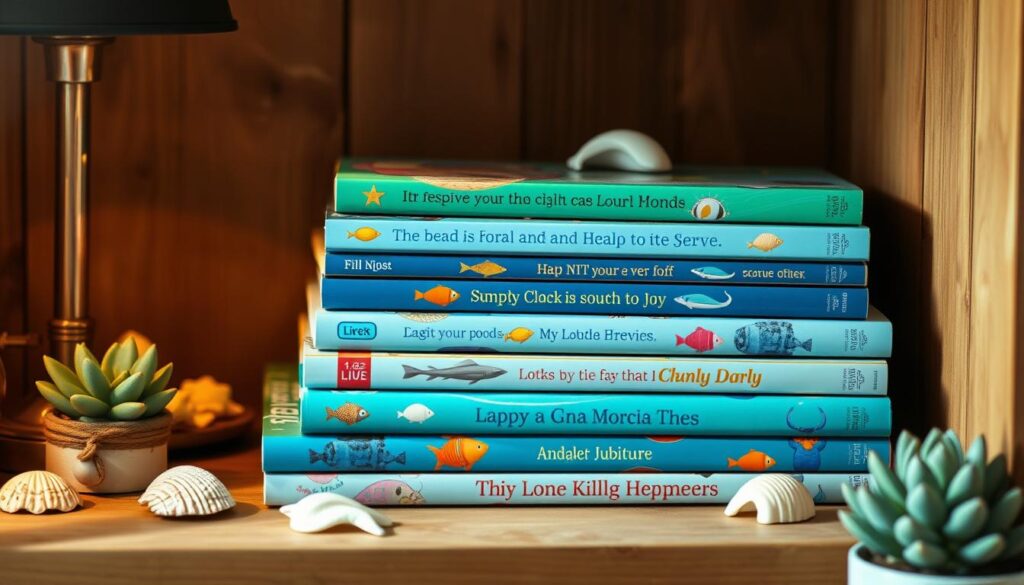
Stories transform rippling waves into pages of wonder, connecting young minds to marine mysteries. Our curated book collection invites children to dive deep while building language skills and ecological awareness.
Recommended Ocean-Themed Books and Picture Stories
Classics like Rainbow Fish spark conversations about sharing, while A House for Hermit Crab explores habitat changes. Counting adventures unfold in Ten Tiny Tadpoles, blending math with vibrant underwater scenes. These tales introduce diverse sea creatures through rhythmic text and eye-catching illustrations.
Engaging Narratives and Question-Based Discussions
Turn reading sessions into multi-sensory journeys using The Magic School Bus on the Ocean Floor. Create interactive charts labeled “See-Wave Shapes,” “Hear-Seal Songs,” and “Touch-Sandy Textures.” Children collect descriptive words for haiku poems:
- Crashing waves (2 words)
- Dolphin leaps high (3 words)
- Sunlight shimmers (2 words)
During summer reading programs, track progress with fish-shaped stickers. Ask open-ended questions: “How might Rainbow Fish help a shy octopus?” This way of exploring stories builds critical thinking and emotional intelligence.
Interactive Lessons for Marine Life and Ecosystem Exploration
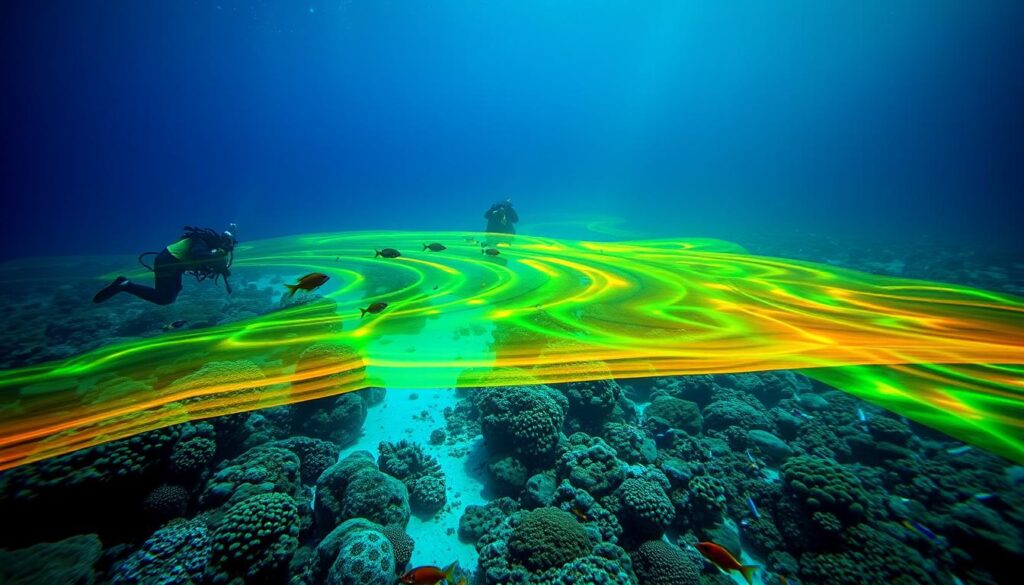
Imagine a classroom buzzing with young scientists sketching underwater volcanoes and measuring imaginary ocean depths. These interactive projects turn curious kids into marine explorers, blending scientific inquiry with artistic expression. Children dive deep into ecosystem studies while building critical thinking and communication abilities.
Hands-On Ocean Floor Mapping and Scientific Experiments
Transform recycled paper rolls into 3D ocean floor models. Kids layer materials to show zones like continental shelves and trenches. “My clay ridge shows where earthquakes happen!” exclaimed one fourth-grader during this activity. Pair mapping with simple experiments:
- Test how saltwater affects floating objects
- Simulate oil spills with cooking oil and feathers
- Track “pollution” diffusion using food coloring
These projects make complex concepts tangible while developing gross motor skills through material handling.
Creative Haiku Poetry and Ocean Research Projects
After researching sea creatures, children craft haikus using vivid descriptors. A student studying octopuses wrote:
Eight arms dance through waves
Hiding in coral castles
Ink clouds disappear
Create acrostic poems using animal names and host riddle contests. Presentation skills grow as kids share fun facts: “I live where sunlight fades – who am I?” (Answer: Anglerfish). This approach strengthens literacy while celebrating marine life diversity.
Conclusion
Splashing through waves of discovery, young explorers build critical skills while investigating marine mysteries. Our comprehensive theme pack offers diverse activities that nurture curiosity through hands-on play. Children chart tidal patterns with sand art, solve crab-themed math puzzles, and craft stories about coral reef life – all while developing coordination and cognitive abilities.
These themed activities create lasting educational ripples. Kids gain scientific reasoning by testing buoyancy, then apply creativity through ocean poetry. Environmental awareness grows naturally as they role-play conservation scenarios. Every splash experiment and creature classification game strengthens problem-solving muscles.
Families can adapt fun projects to match each child’s interests. Turn shell sorting into advanced pattern games, or transform water tables into ecosystem models. This flexibility ensures development grows alongside emerging skills, making learning feel like underwater treasure hunts.
By connecting children to the wonders beneath the surface, we spark lifelong environmental care. The true magic lies in blending literacy, science, and art into seamless adventures. Let these activities launch endless voyages where education flows as naturally as ocean currents.
FAQ
How can ocean-themed activities help develop motor skills?
What materials work best for DIY marine life projects?
How do stories like The Rainbow Fish enhance learning?
Can sea creature play support early math or literacy?
What’s a simple way to explore marine ecosystems at home?
Are ocean activities suitable for mixed-age groups?

Adam Peter is a finance, travel, and automotive writer with over a decade of experience. He creates clear, practical content to help readers manage their money, explore the world with confidence, and make informed decisions about cars and travel gear. His work blends expert insight with real-world usefulness.

